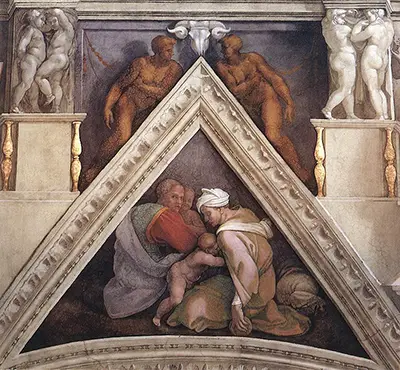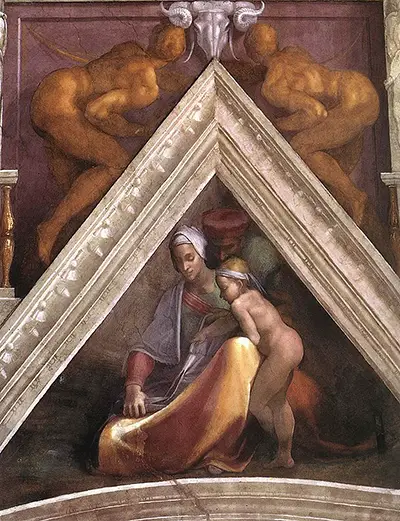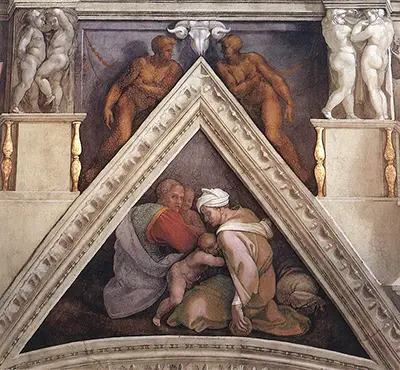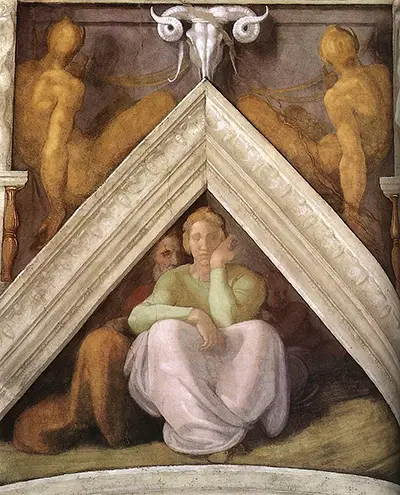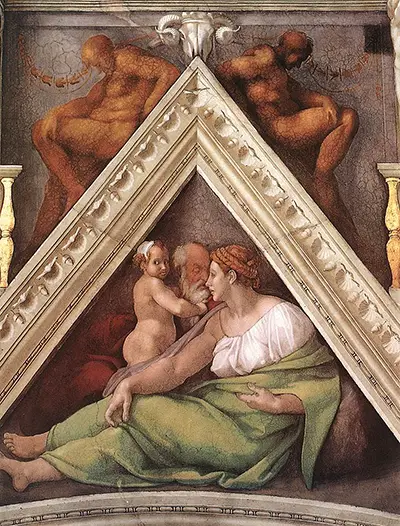The spandrels sit directly above the windows of the chapel, some of which are now actually closed. There is a relatively youthful look to this series of paintings, as the artist attempts to cover both genders and all generations within the Chapel's interior. Unfortunately, despite the best efforts of a number of art historians over the centuries, it has not been possible to accurately identify all of the figures shown within this series of frescos, even though this has been achieved for most of the rest of the work elsewhere on the walls and ceiling. The content in each of these designs has a family feel, with a woman making some clothing for her child in Salmon, whilst in Ozias there is a young child attempting to breastfeed. The overall atmosphere of these items therefore contrasts dramatically from some of the lively content found elsewhere within this Chapel, such as in The Last Judgement, or the iconic Creation of Adam.
Michelangelo carefully planned these artworks to adjust to the triangular format, with the main focal points being just under the central point of the shape. Both lower sides are relatively bare as he chooses to keep these items fairly simple. He could work at a fierce pace when necessary and several of his Sistine Chapel paintings were produced in just a matter of days, and that may well have been the case here as these compositions are amongst the most straightforward of all the work that he completed within the Chapel. He also made use of assistants on larger projects to avoid becoming bogged down for years in the same location. In the case of these paintings, he may have simply got on with them himself as it would not take long to produce whatever idea was in his head with just a few figures in each fresco. Compare that, for example, to his work elsewhere in this project, with some designs featuring a mass of complex detail.
Over the last few centuries a number of art historians have visited the Chapel in a manner almost akin to a religious pilgrimage. Such is the amazement which has been reported time and time again by those who have entered the famous location that many more have been inspired to make a visit themselves. The very nature of installed art ensures it is likely to remain in the place that it was originally intended, where as the more standard frame oil paintings can be transported all across the world whenever someone is willing to pay the necessary price. Fresco art was very common within Italian religious buildings across the Renaissance and these were never intended to be removed, and doing so would certainly damage the majority of them. The only downside to this for Italy is that several smaller churches have had to foot large insurance and perservation bills in order to safely protect their own displays.
